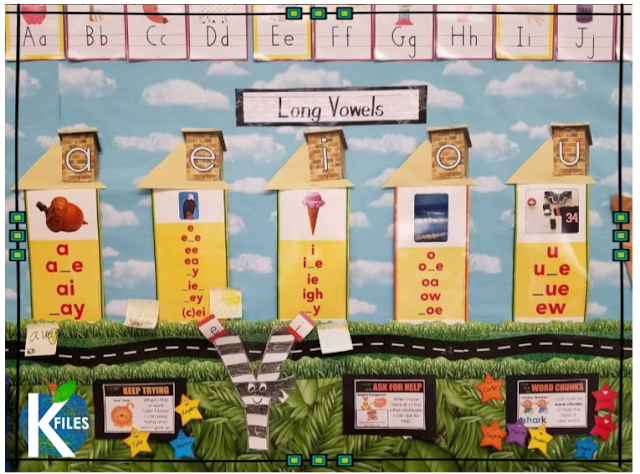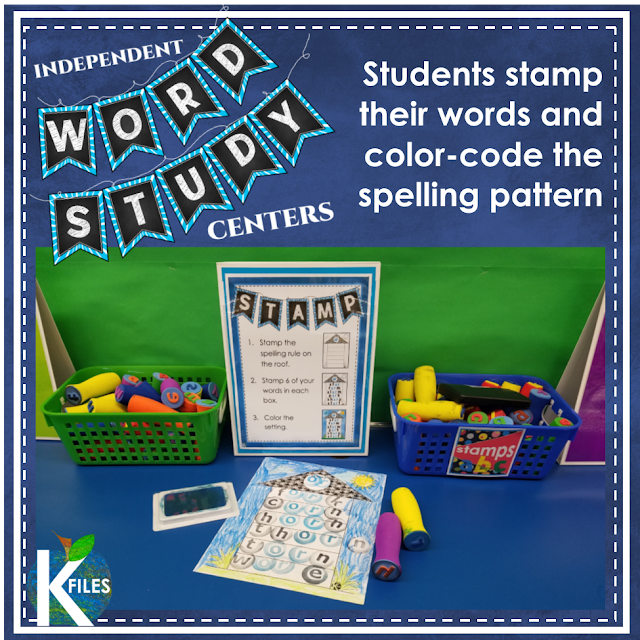Many of us Super Teachers have had Word Walls in our classrooms for years and years now. I have had one since forever! However, I have never found the Word Wall to be truly interactive for my students. Have you?
Of course, we practiced our words daily, and reviewed most of the words on a weekly basis. I would smile proudly when I found my students referring to the Word Wall during Writer’s Workshop but I always had this niggling suspicion it truly was not benefiting my students. Until I switched things up a bit and now it is TRULY INTERACTIVE!
You’re going to LOVE it!
8 years ago…
When I taught kindergarten, I had a traditional word wall. Later, I was sure that I included my students’ names and their pictures (adorbs! -not pictured, of course). Shortly after, I began to include Word Family Houses. This was a HUGE stepping stone for me. The FIRST step toward an interactive Word Wall. Here is a photo of my first Word Wall:


I thought I was so clever including the Word Family houses for short vowel sounds above our Word Wall! I mean, I was, right? It was great practice for my kinders. But was it truly interactive? Not really. We placed our sight words and our word family houses on display and simply looked at them on occasion. That’s it. A pretty bulletin board that took up A LOT of valuable wall space. So, the desire to create a TRULY interactive Word Wall was born.
3 years later…
Now, being a first grade teacher and since having begun my journey with differentiated Spelling lists with the help of Words Their Way (learn more about this journey
HERE), I found the need to focus more on phonograms rather than letter sounds. So, I switched up my Word Wall. It then evolved into this:


Notice the post-its around each Long Vowel house! Yes! Those are words written by my students as they hunt for words in their decodable books that contain the current Spelling pattern they are studying! A bit more interactive, right? Yes, I was getting closer to having a truly interactive Word Wall.
But I still was not satisfied. So, the pursuit for a truly interactive Word Wall continued.
I spent a huge amount of time this summer working on individual Word Family houses for EACH phonogram. For example, there is not just ONE word family house for each long vowel sound but,
FIFTEEN long vowel houses-one for EACH phonogram! Here is a glimpse of “Long Vowel Lane”:

I must ask you to take a closer look at one of the houses. Notice the windows are the exact same size as a 3x3 post it. Notice how the graphics all contain that ONE long vowel sound for ONE phonogram. In fact, you might even tell a story about the words that live in that house together. Here is a closeup for you to take a better look (click to enlarge):



Now it gets exciting! Since I differentiate the spelling lists for my students using Words Their Way, we mainly focus on one phonogram a week. If I am working with 4-5 different Word Study groups, that involves 4-5 different Word Family houses!
Just WAIT! …it’s coming…
First let me explain our
Read to Self routine.
When I am working with my small guided reading groups, the remaining students are assigned differentiated Word Study assignments for Word Work AND
Read to Self.
As a
Read to Self assignment, I provide my students with decodable readers so they can practice reading words according to that specific spelling pattern. They hunt for words, record them in their “Gumballs Collection” (a notebook that contains a page for each phonogram -we call them "gumballs"-I’ll explain this further in a bit) and they prepare a post-it to share their learning with the class during “Share”.
You are going to LOVE this…
After our
Daily 5 center rotations, I provide my students with the opportunity to share their learning from their
Read to Self assignment with the whole class. This provides the whole group with the opportunity to learn from each other. Which will expose them to 4-5 different phonograms!
My above-level students will have an opportunity to review what they have previously learned when an “on-level” or “below-level” Word Study group presents their learning.
On the flip-side, my “on-level” and “below-level” students will be exposed to new phonograms that the above-level groups present (a bit of frontloading!)
After the children share their “gumball”, we display their learning by adding their post-it to our Word Wall. We place them on the house windows or below the house for all to see and learn from. The children feel so proud to see their work displayed on the “Wall”.
To learn more about how I manage our
Read to Self assignments and Share Time, please visit this blog post:
Would you take one more peak at a house? I want you to notice
one more thing about our Word Wall:



They are
color coded! Be still my teacher heart! What teacher and student doesn’t enjoy color-coding?
You are going to LOVE this too…

My students benefit from using a color-coded system for our spelling patterns that we like to call "gumballs". The color of the houses matches the color-coded system!
This simple color-coding strategy has proven to be a HUGE help to my students when identifying phonograms in their reading AND applying these spelling rules in their own writing! I cannot begin to explain how well this works for my students and how much they enjoy it. I urge you to try it!
There are SIX different Word Wall sets available at my TpT shop.
You can find them HERE or by clicking on the image below.
I truly hope you have found this information helpful. Be sure to try the color-coded system to help your young readers identify spelling patterns in their reading and their writing! It helps tremendously!



































 Now it gets exciting! Since I differentiate the spelling lists for my students using Words Their Way, we mainly focus on one phonogram a week. If I am working with 4-5 different Word Study groups, that involves 4-5 different Word Family houses!
Now it gets exciting! Since I differentiate the spelling lists for my students using Words Their Way, we mainly focus on one phonogram a week. If I am working with 4-5 different Word Study groups, that involves 4-5 different Word Family houses!


 They are
They are  My students benefit from using a color-coded system for our spelling patterns that we like to call "gumballs". The color of the houses matches the color-coded system!
My students benefit from using a color-coded system for our spelling patterns that we like to call "gumballs". The color of the houses matches the color-coded system!



